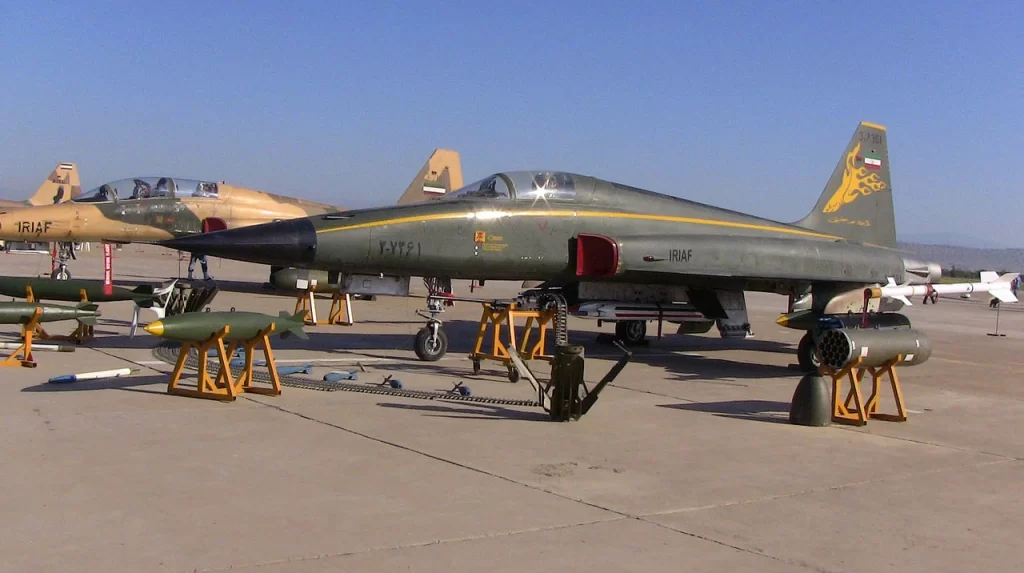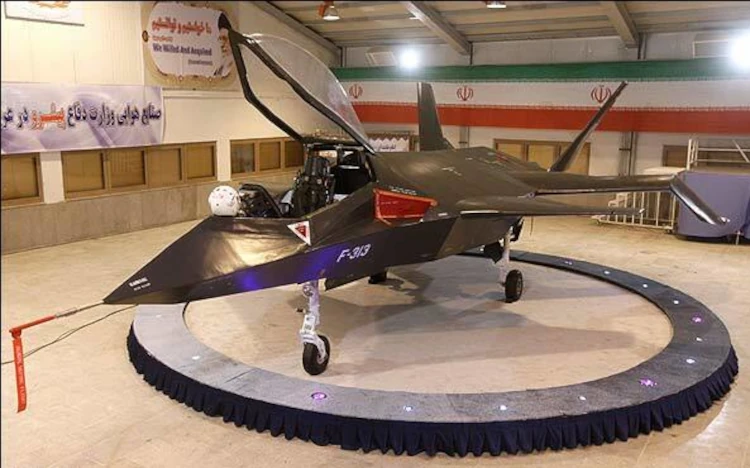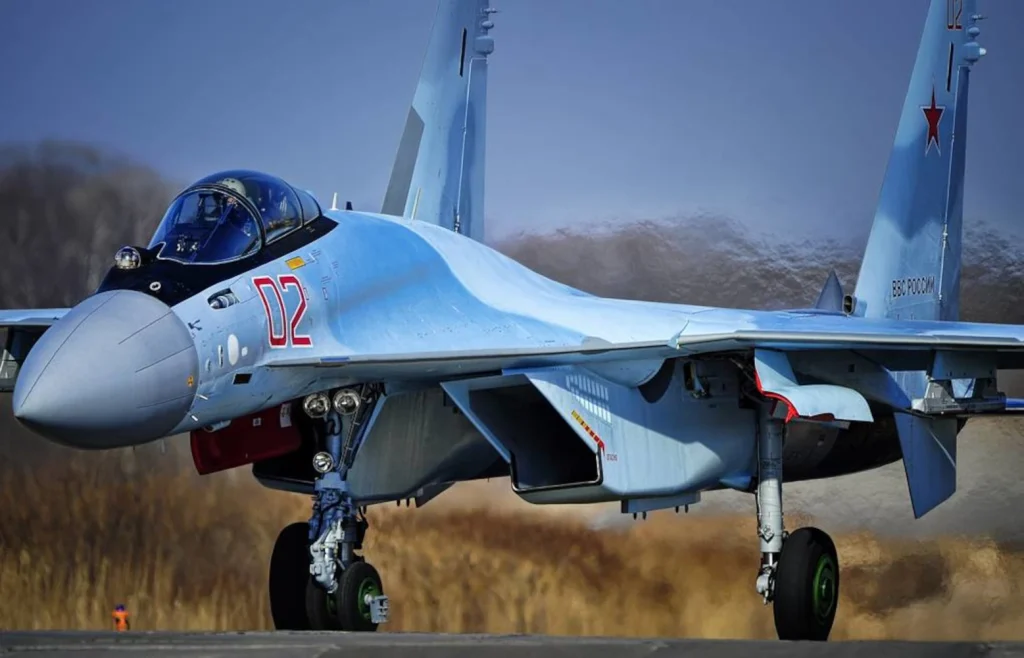Iran is the only country that still operates the F-14 Tomcat. It has an estimated 44 aircraft left behind before the Islamic Revolution of 1979. The F-14s played an important part in the 1980s Iran-Iraq War. Iran purchased approximately 30 MiG-29 fighters from Russia in the 1990s. They have upgraded some of them locally to extend their useful life. Iran was furnished with around 300 F-4 Phantom 2s before the revolution, and approximately 60 are still operating today. These ageing aircraft perform air defence and ground attack tasks. Iran now has approximately 45 operational F-5 Tiger 2s dating back to the Shah’s period before 1979. The design impacted Iran’s Saegheh fighter development.
Iran has been developing local fighter jets since the 1980s, as restrictions and embargoes have limited their ability to purchase aircraft from other countries.

Azarakhsh
The Azarakhsh (meaning “Lightning” in Persian) was Iran’s first domestically designed and produced fighter aircraft. Development began in the mid-1980s during the Iran-Iraq war when Iran was under sanctions for acquiring Western military equipment. The US F-5 Freedom Fighter influenced the design, which Iran had acquired before the 1979 Islamic Revolution. A single prototype, Azarakhsh, was built and completed its first test flight in 1997.
The aircraft was powered by two French Turbomeca J85 turbojet engines, also acquired before the revolution. The maximum speed was estimated to be just under Mach 1, and the service ceiling was around 15,000 meters. Although declared operational by Iran, the Azarakhsh did not enter serial production, likely due to technical difficulties and lack of funding.
The program demonstrated Iran’s ambition to achieve self-sufficiency in military aviation but also highlighted shortcomings in aerospace engineering experience and technology. The lessons from Azarakhsh were likely incorporated into Iran’s next domestic fighter project, the Saegheh, which showed a more mature design.

Saegheh
Development began in the early 2000s as a continuation of the preceding Azarakhsh programme. The Saegheh is a reverse-engineered Iranian-built version of the American F-5E/F Tiger II. Iran had purchased F-5s before the 1979 Islamic Revolution. The prototype flight happened in 2004, and manufacture and service began in 2007.
The Iranian Air Force and the Islamic Revolutionary Guard Corps Air Force are estimated to have 12-20 Saeghehs active. It has a twin tail and swept wings and is powered by two Russian-supplied RD-33 turbojet engines.
The avionics are likely based on Iran’s previous improvements to the F-5 and F-14 systems. Top speed is subsonic, a little under Mach 1, with a service ceiling of roughly 40,000 feet.
Gun pods and air-to-air missiles are carried on the wingtip launch rails. It lacks radar-guided air-to-air capabilities. Sanctions have made getting reliable engines and avionics difficult, slowing Saegheh’s production and development.
The Saegheh gave Iran experience with fighter manufacturing and showed gradual development, although it did not attain complete self-sufficiency or compete with sophisticated Western designs.

Qaher-313
It was unveiled in 2013 as an indigenously developed and manufactured jet fighter.
Iranian officials described sophisticated capabilities such as stealth shaping, composite materials, advanced avionics, and powerful jet engines.
The prototype displayed was sized similarly to an F-5, with swept wings and twin vertical stabilisers. It was said to have a maximum speed of Mach 1.5 and a range of 2,000 km.
However, aviation experts rapidly identified design defects and discrepancies, indicating that the jet could not fly. The aeroplane appeared too small to carry the required characteristics or a significant weapons payload.
The cockpit appeared primitive and similar to an F-5, with no modern avionics. Engine inlets appeared too tiny to deliver the strong turbofans required for supersonic flight.
Most researchers believe the Qaher-313 was a non-functional mockup rather than a true prototype. It was most likely an Iranian propaganda campaign designed to depict local technical capabilities that do not exist. Flight testing or operational use of the Qaher-313 has never been confirmed.
Sanctions have impeded Iran’s fighter development by denying it access to modern avionics, radars, and materials. Most of their aircraft do not compare to modern designs from the United States, Europe, and Russia.
Iran has considered cooperative fighter development with China and Russia, but no concrete plans have materialised.

Multiple reports arose in 2023 claiming Iran and Russia agreed to purchase 24 Su-35s formerly built for Egypt. On November 29, Iranian Deputy Defence Minister General Mehdi Farahi stated that Iran is ready to receive Russian Su-35 and Yak-130 aircraft and Mi-28 helicopters, according to Iranian news outlet Tasnim News.
Iran’s fighter aircraft capabilities remain a combination of outdated foreign designs and modest domestic development. While the Su-35 procurement could provide a considerable boost when completed, Iran continues to encounter hurdles in modernising its air force. Despite apparent ambition, ongoing sanctions have made procurement difficult and have hampered domestic production. However, Iran continues to upgrade old aircraft steadily and develop new indigenous planes such as the Kowsar, demonstrating a commitment to broadening its defence options. The coming years will show whether Iran can realise its military aviation ambitions and take significant strides towards self-sufficiency.
